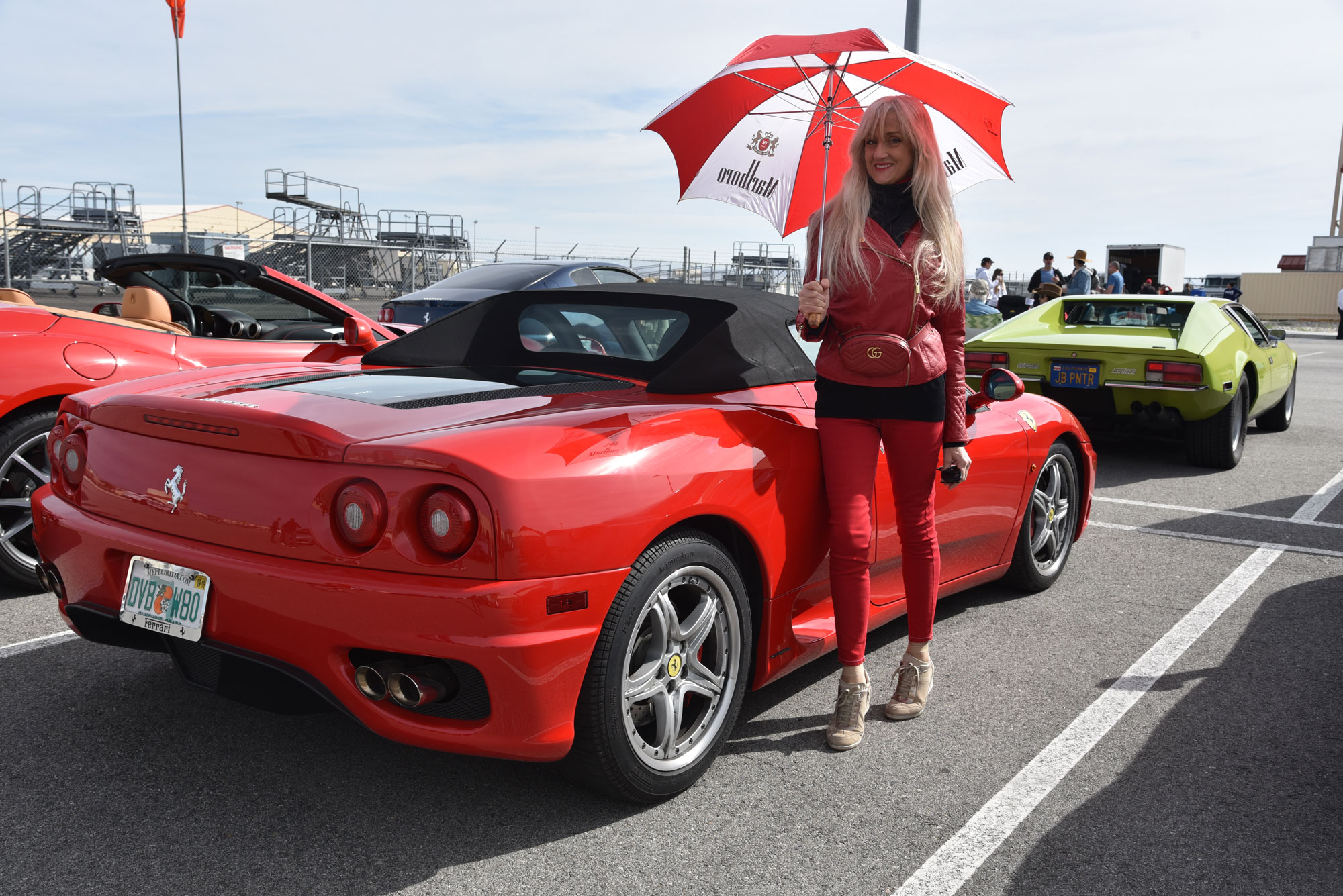Former F1 umbrella girl, now an astrophysicist and Ferrari owner, shatters stereotypes
If you happen to encounter Dr. Fiorella Terenzi at a car show standing next to her immaculate 2004 Ferrari 360 Spider with its gotta-have-it six-speed manual, don’t be afraid to ask her questions. You’re guaranteed a memorable conversation. You may think you know the type of person who owns a Ferrari, but be prepared to have your stereotypes blow like a supernova as the beaming, platinum-tressed Terenzi unreels her story in a charmingly thick Italian accent.
A native of Milan in northwest Italy, Terenzi was still in high school in the late 1970s when an agency scout approached her about working as an umbrella girl for car and bike races at Imola, Monza, and other local tracks. While providing shade for F1 luminaries such as Gilles Villeneuve and Alain Prost on behalf of Marlboro and other sponsors, she entered university with a deep passion for astronomy. Later, she came to the U.S. to pursue her interest in the acoustic waves generated by the universe and became an astrophysics professor while slaving and saving her way over 10 years into Ferrari ownership. Nowadays, after publishing a book on how astrophysics affects our lives, performing concerts based on the acoustic waves from outer space, and appearing on the “Dennis Miller Show,” she’s a fixture at Ferrari club events in both Florida and Southern California, between which she divides her time.
Recently, we encountered Terenzi and her 360 at a Ferrari Club of Southern California event at Edwards Air Force Base. It only took a minute or two of small talk to realize that we needed her story in full. It starts in a farming village outside of Milan, where Terenzi used to go as a child in the summer to visit her grandmother. At night, the two would stroll the fields gazing up at the stars, her grandma spinning tales for her on the fly about the heavens and the constellations. “She would say, ‘Do you feel it, Fiorella, the stars beating with your heart?’” Terenzi says. “And suddenly I was looking up and saying, ‘Yeah, Grandma, I do feel it!’ She didn’t know a thing about quasars or black holes, but she activated my imagination for the universe.”
At the University of Milan, Terenzi split her time between studying mathematics and astrophysics while working the grids nearly every weekend at Monza and Imola during the early-’80s era of ground effects and 1000-hp turbo engines. “I would copy the notes from my textbooks and roll them into a tight roll that I could leave in my purse,” Terenzi recalls, “so that in every quiet moment, during any break, I could unzip my purse very quietly and with my thumb and finger, roll the notes and read them so I could be prepared for the test.”



While most of her fellow umbrella girls were intent on pursuing modelling careers or meeting rich future husbands, Terenzi was watching the mechanics as they fiddled with the cars. “I remember I was with Piquet, shadowing and staying with him, and this machine was rolled into the box on wheels and hooked up to the Ferrari. And I finally realized that it was really the first computer being hooked up to a Ferrari for the diagnosis of the engine.” Terenzi paid rapt attention. “Even if I could not ask questions because it was not my job, I absorbed every word, and it stayed with me, like the stars stayed in my heart. The desire of having a Ferrari was ignited.”
While working on her doctoral dissertation in 1987, Terenzi came to the U.S. to take advantage of the better facilities here and ended up staying permanently, becoming a professor of astronomy and physics at Florida International University in Miami. She also became an author, lecturer, and musical performer. “I miss Italy and the food, but a dream can become reality in the U.S. The sky is the limit here.”
The 360 Spider finally came her way in 2014 after 10 years of saving on an academic salary. “Because I knew I wanted it to be manual, and I was not going to compromise on that, I was looking into the 355, the 360, and the 430,” she says. “A 430 was my preference, but to find a manual was like to find a very rare diamond.” Her red 360 Spider popped up at a local place with low miles and a good owner history. “It was a private dealership and they told me they had it and to stop the search.”
Terenzi says she drives the Ferrari on the weekends without fail, commuting to work in her other car, a Mazda Miata. “I have a blower, and I blow the engine so all the dust comes out. I make sure everything is properly working. I know the music of this car. It can tell me something is not working, but most of the time it tells me, ‘Let’s go!’”
While encouraging her female science students to “do it better than me,” Terenzi keeps up with a few of her old grid girl friends, some of whom did find rich husbands and have much newer Ferraris than hers. “They’re really a lottery winner, and they may look down on me because I don’t have the new Ferrari or a Rolex,” she says. “Bless them for their worry-free life. My message is maybe someday they will understand, what does it mean for a single woman—still a minority in astronomy and physics, still a minority in the Ferrari world—to really become your own woman.”






